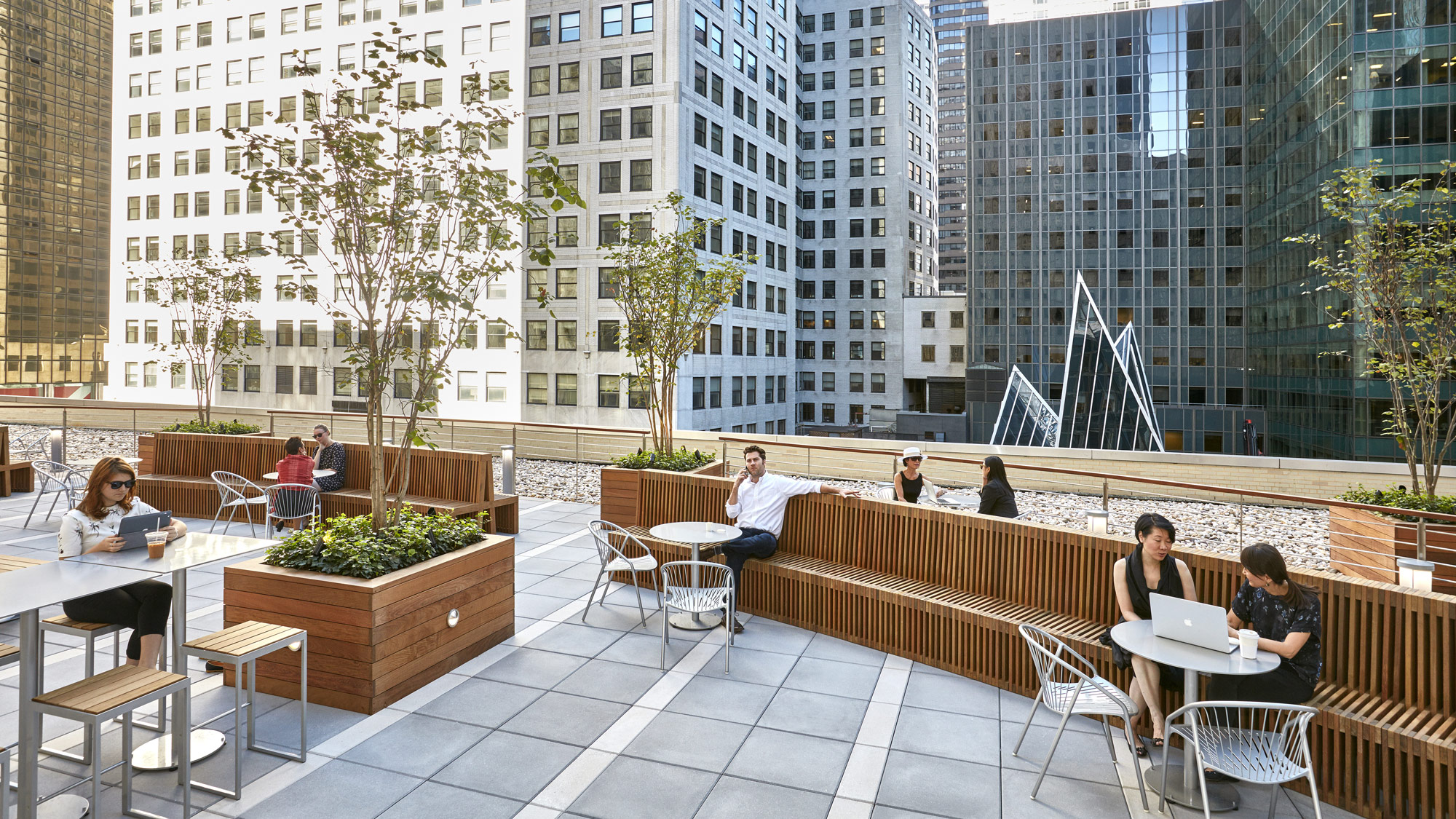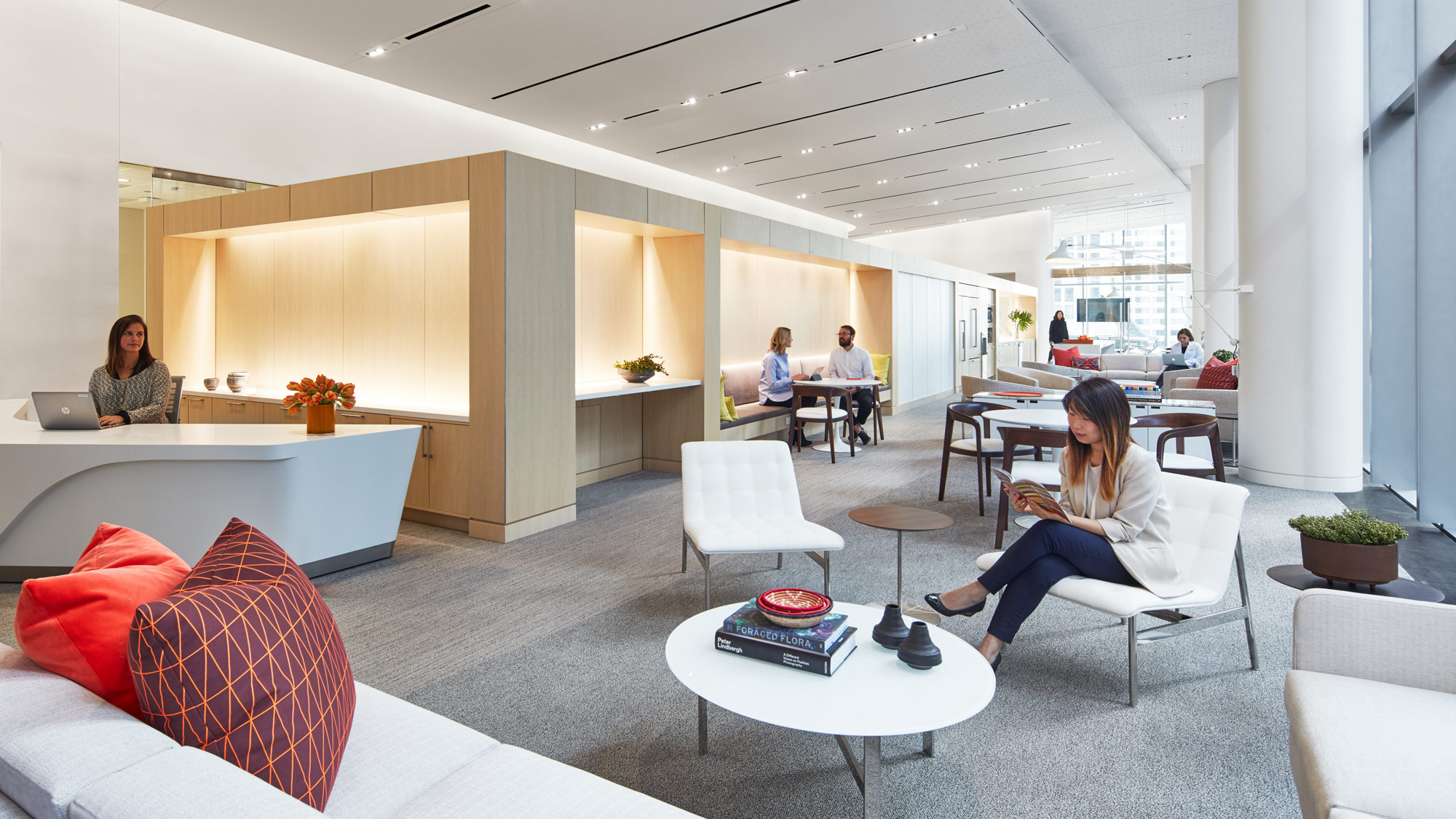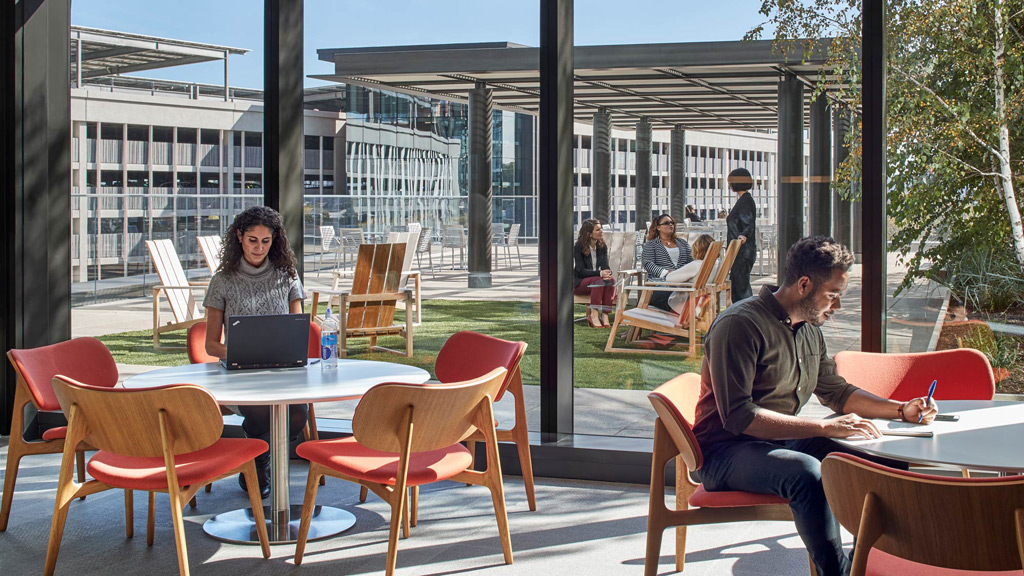Healthcare Providers Take Note: Every Space is a Healthy Workspace
By Cindy Coleman and Michael Schur
Thanks to mobile technology, work now happens everywhere, all the time — and healthcare providers should take notice. As technology accelerates the pace of change in patient-provider experiences — from HIPPA-certified digital voice assistants to wearable EKG’s — the work once done in an examination room is now happening just about anywhere. While healthcare environments are shifting, physical space remains a critical asset that has the power to not only improve real estate performance, but also improve employee performance and patient experience at the same time. Today, the challenge is to uncover how your real estate can work harder for you and be a healthier, more active environment for everyone from your patients to your staff.
When all spaces are work spaces, then all spaces need to perform. Today’s work environments place an equal emphasis on real estate performance as they do on supporting human performance, well-being and an efficient environmental footprint. The new value proposition for the healthcare industry shifts the emphasis of the real estate from cost containment and patient throughput to real estate strategies that yield a high return on investment: increased staff and clinical performance, elevating the care and service model experience, becoming a vital resource in keeping the local community healthy, and being good stewards of the real estate with flexible and hard-working utilization strategies. As market competition throughout the healthcare industry continues to escalate, designing facilities that take a cue from the corporate world — where work, and the work of care, happens everywhere—is a key step in getting more value out of your real estate.

To understand just how much value is being derived from your real estate asset, we must first borrow another big lesson from the world of work; get good qualitative and quantitative data on utilization, performance, and overall experience. Different from looking at capacity and throughput, the combinational benefit of utilization, performance, and experience is objective data and insights into the cause and effect of utilization. When applied to healthcare environments, our findings show spaces are significantly underutilized.
So, why are spaces so underutilized? Gensler’s extensive research on the changing nature of work has shown us that today, for many workers, work happens in short spurts rather than long stretches. That’s because no matter your job — a physician or an administrator — you are likely toggling through different work-related activities and, at the same time, adjusting to different cognitive states. Providing employees with choice and variety of space types that are the right fit for different work modes or styles (such as focus work, consultations, or collaborative) are what make people perform their best at work.
What’s the solution?
The best solutions are nuanced ones. An ideal solution considers the culture of the organization as they carefully assess the proportionate balance of individual spaces versus shared spaces — in other words, “Me” versus “We” spaces. Balance also comes into play by providing employees with both a sense of belonging and a sense of freedom to move and be active throughout the day.
Corporate real estate has shown us that it’s not just the offices, workstations, and meeting spaces that need to work harder. Today, we see a premium on the in-betweens: lobbies, cafes, and circulation corridors throughout the real estate portfolio or facility. By designing these spaces with purpose, activity, and experience in mind, these in-between spaces lose their liminal quality and become desirable, just-in-time places to drop-in, to observe, and to interact.

The combination of these in-between and shared spaces provide all employees with the opportunity to stay for a long time or a short spurt: make a private call, catch up with a colleague, review a lab report, write a report, respond to emails, or just grab a cup of coffee. Now, instead of wasted space, all spaces, including the in-between and shared spaces, are recast as value-based spaces: Active, healthy, well-equipped, right-sized, and purposeful .
In this time of unprecedented change in the business of healthcare, one thing is for sure: the status quo of dedicating one room or one space to a single function misses an important opportunity to change the job description of your real estate. The new job represents a shift from a function-only model to an improved staff and patient experience model, too. When spaces feel and are empty, they look left-over, uncared-for and unwelcoming. And, depending on the situation, they may even feel unsafe. Today, as work happens everywhere, it’s an opportunity to make everywhere work harder for you. When you do, your staff, patients and your bottom line will thank you.


